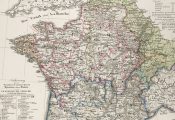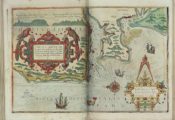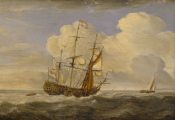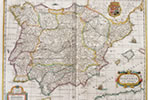There was, however, one striking difference to the transatlantic trade: no one really associated slavery with race or colour. Slaves could be Black or White, Christian, Muslim or pagan. Moreover, despite the fact that significant slave trading by Arabs to Black Africa had been going on since ancient times, the link between slavery and ethnicity (or, more popularly, ‘race’) – that is, between slavery and Blackness – was more or less non-existent … until, that is, it was forged by maritime Europeans in the form of chattel slavery.
Expanding horizons
On the eve of maritime expansion in the 15th century, European states were very different from their modern descendants. Largely monarchical and aristocratic, their governments ruled via traditional loyalties at home and through dynastic links abroad. The horizons of their rulers were greatly expanded during the course of the 15th and 16th centuries. At this time it became apparent that global trade and conquest outside Europe’s traditional spheres of operation (i.e. within Europe itself and in the Mediterranean) could yield greater rewards than older trading systems. The wealth from such ventures would greatly enhance political power at home.
The key player was Portugal via its seaborne expansion along the West African coast. In the Americas, Europeans, led by Spain, successfully founded a string of new settlements. In time, these possessions were bolstered by Africans whose labour as slaves had been confirmed by Portuguese and Spaniards in the Atlantic and in Iberia itself.
Ideas about slavery
What established the case for using Africans as slaves was not merely the availability of Africans in such large, economic numbers, but European ideas about slavery itself. Europe was, of course, divided against itself at home. Periodic wars between monarchs, their nations and their European allies and foes spawned rivalries that lasted centuries. Europeans, however, seemed united on one thing: they would not use other Europeans as slaves.
They were prepared to settle new lands with certain types of labour shipped from Europe. Indentured labour and vagrants were transported to the colonies in huge numbers. Portugal, for example, dispatched boatloads of convicts to its new colonies. Prisoners of war – from the English Civil War, for instance – were also sent across the Atlantic to the new settlements by the thousand.
Europeans were united, however, in their unwillingness to send fellow Europeans as slaves on the same ventures. Although they killed each other in warfare and executed fellow citizens for a host of crimes, they were, utterly disinclined to treat those same people as slaves and transport them to the Americas.
Rivalries and conflict
From 1500 onwards, maritime changes made possible access to, and control over, distance corners of the Atlantic (and even further afield) with the result that European rivalries were now projected on a global stage. Henceforth, Europeans fought each other, competed against each other and manoeuvred to take advantage of each other right round the shores of the Atlantic.
Indigenous peoples inhabited the Americas long before European colonisation. As European powers continued to carry out their rivalries across the Atlantic, expansion into the Americas introduced diseases that were foreign to indigenous populations. Many died as a result of these diseases and ongoing wars.
Europeans however, were unsuited to the tropical climate and diseases and as a result turned to Africa and to Africans for the work force needed in key areas settlement in the Americas.
However, when Europeans began to use Africans to develop the Americas they, too, became part of the conflict. Europeans henceforth struggled against each other for access to African slave markets and over control of the shipping routes and slave colonies. The slave trade thus became not only a major source of European – and North American- prosperity but the cause and occasion of European rivalries and conflict.






